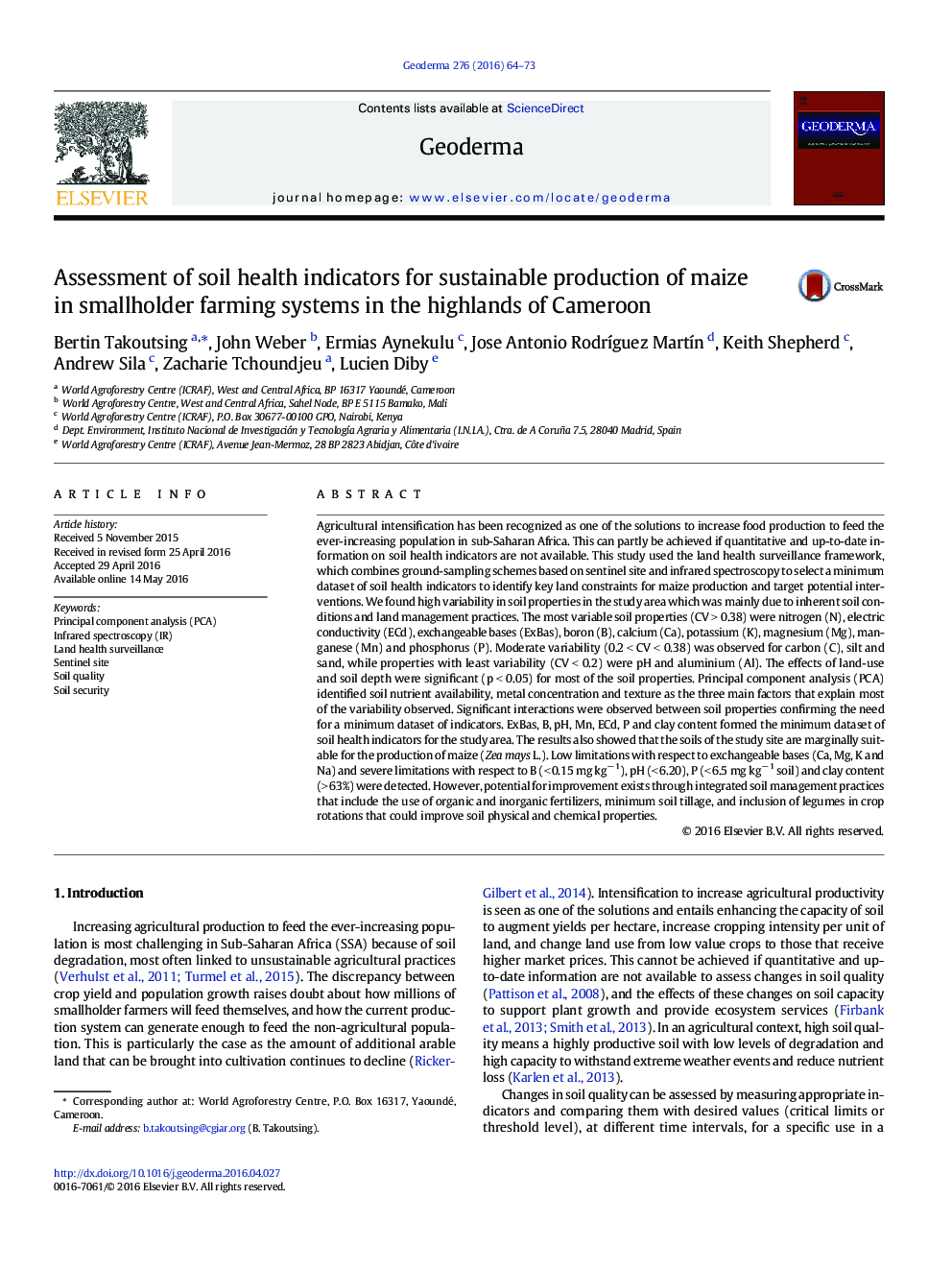| کد مقاله | کد نشریه | سال انتشار | مقاله انگلیسی | نسخه تمام متن |
|---|---|---|---|---|
| 4572932 | 1629441 | 2016 | 10 صفحه PDF | دانلود رایگان |
• Land use changes significantly affected soil dynamic properties.
• Land use types and inherent properties are responsible for soil variability.
• Indicators of soil quality include ExBas, B, pH, Mn, ECd, P and clay content.
• Soils of the study site are marginally suitable for the production of maize.
Agricultural intensification has been recognized as one of the solutions to increase food production to feed the ever-increasing population in sub-Saharan Africa. This can partly be achieved if quantitative and up-to-date information on soil health indicators are not available. This study used the land health surveillance framework, which combines ground-sampling schemes based on sentinel site and infrared spectroscopy to select a minimum dataset of soil health indicators to identify key land constraints for maize production and target potential interventions. We found high variability in soil properties in the study area which was mainly due to inherent soil conditions and land management practices. The most variable soil properties (CV > 0.38) were nitrogen (N), electric conductivity (ECd), exchangeable bases (ExBas), boron (B), calcium (Ca), potassium (K), magnesium (Mg), manganese (Mn) and phosphorus (P). Moderate variability (0.2 < CV < 0.38) was observed for carbon (C), silt and sand, while properties with least variability (CV < 0.2) were pH and aluminium (Al). The effects of land-use and soil depth were significant (p < 0.05) for most of the soil properties. Principal component analysis (PCA) identified soil nutrient availability, metal concentration and texture as the three main factors that explain most of the variability observed. Significant interactions were observed between soil properties confirming the need for a minimum dataset of indicators. ExBas, B, pH, Mn, ECd, P and clay content formed the minimum dataset of soil health indicators for the study area. The results also showed that the soils of the study site are marginally suitable for the production of maize (Zea mays L.). Low limitations with respect to exchangeable bases (Ca, Mg, K and Na) and severe limitations with respect to B (< 0.15 mg kg− 1), pH (< 6.20), P (< 6.5 mg kg− 1 soil) and clay content (> 63%) were detected. However, potential for improvement exists through integrated soil management practices that include the use of organic and inorganic fertilizers, minimum soil tillage, and inclusion of legumes in crop rotations that could improve soil physical and chemical properties.
Journal: Geoderma - Volume 276, 15 August 2016, Pages 64–73
